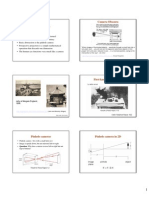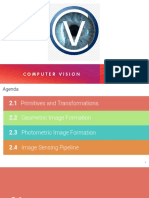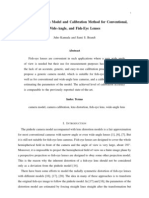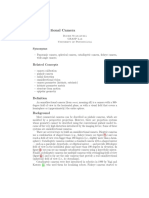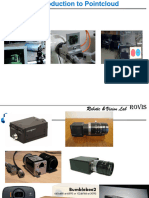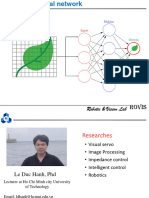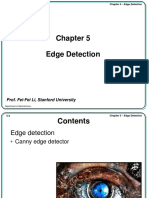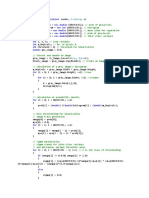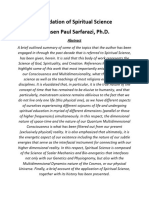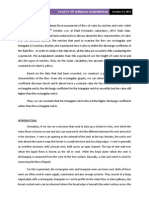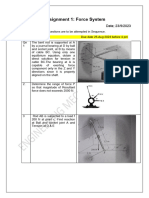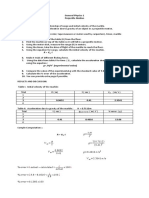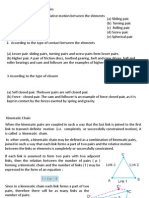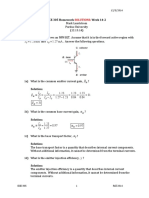7-1 Chapter 7 – Camera Model
Chapter 7
Projective Geometry and
Camera Models
James Hays, Brown University
Department of Mechatronics
7-2 Chapter 7 – Camera Model
Contents
Mapping between image and world coordinates
• Projective geometry
Vanishing points and lines
• Pinhole camera model
• Cameras & lenses
• Projection matrix
Department of Mechatronics
7-3 Chapter 7 – Camera Model
Camera and World Geometry
Department of Mechatronics
7-4 Chapter 7 – Camera Model
Projection can be tricky…
Department of Mechatronics
7-5 Chapter 7 – Camera Model
Projection can be tricky…
Department of Mechatronics
7-6 Chapter 7 – Camera Model
Projective Geometry
• What is lost?
Length
Department of Mechatronics
7-7 Chapter 7 – Camera Model
Length is not preserved
Department of Mechatronics
7-8 Chapter 7 – Camera Model
Projective Geometry
• What is lost?
Length
Angles
Department of Mechatronics
7-9 Chapter 7 – Camera Model
Projective Geometry
• What is preserved?
Straight lines are still straight
Department of Mechatronics
7-10 Chapter 7 – Camera Model
Vanishing points and lines
• Parallel lines in the world intersect in the image at a
“vanishing point”.
Department of Mechatronics
7-11 Chapter 7 – Camera Model
Vanishing points and lines
Department of Mechatronics
7-12 Chapter 7 – Camera Model
Vanishing points and lines
Department of Mechatronics
7-13 Chapter 7 – Camera Model
Vanishing points and lines
Department of Mechatronics
7-14 Chapter 7 – Camera Model
Note on estimating vanishing points
Department of Mechatronics
7-15 Chapter 7 – Camera Model
How do we see the world
Graphical representation of the eye looking at a palm tree. Point
C is the optical center of the lens.
Department of Mechatronics
7-16 Chapter 7 – Camera Model
Department of Mechatronics
7-17 Chapter 7 – Camera Model
Department of Mechatronics
7-18 Chapter 7 – Camera Model
Camera obscura: the pre-camera
• Known during classical period in China and Greece
(e.g. Mo-Ti, China, 470BC to 390BC)
Department of Mechatronics
7-19 Chapter 7 – Camera Model
Lens Based Camera Obscura, 1568
Department of Mechatronics
7-20 Chapter 7 – Camera Model
Department of Mechatronics
7-21 Chapter 7 – Camera Model
Department of Mechatronics
7-22 Chapter 7 – Camera Model
Department of Mechatronics
7-23 Chapter 7 – Camera Model
Department of Mechatronics
7-24 Chapter 7 – Camera Model
Parallel light rays which pass through a small aperture
begin to diverge and interfere with one another. This
becomes more significant as the size of the aperture
decreases relative to the wavelength of light passing
through, but occurs to some extent for any size of
aperture or concentrated light source.
Department of Mechatronics
7-25 Chapter 7 – Camera Model
Cameras and Lenses
Adding Lenses!
Department of Mechatronics
7-26 Chapter 7 – Camera Model
Cameras and Lenses
• A lens focuses light onto the film
Department of Mechatronics
7-27 Chapter 7 – Camera Model
Cameras and Lenses
• A lens focuses light onto the film
Rays passing through the center are not deviated.
All parallel rays converge to one point on a plane
located at the focal length f.
Department of Mechatronics
7-28 Chapter 7 – Camera Model
Cameras and Lenses
• A lens focuses light onto the film
There is a specific distance at which objects are “in
focus” [other points project to a “circle of confusion”
in the image].
Department of Mechatronics
7-29 Chapter 7 – Camera Model
In optics the refractive index or index of refraction of a substance or medium is a measure of the speed of light in
that medium
n = speed of light in a vacuum / speed of light in medium
http://en.wikipedia.org/wiki/Refractive_index#Typical_values
Cameras and Lenses
• Laws of geometric optics:
Light travels in straight lines in homogeneous medium.
Reflection upon a surface: incoming ray, surface normal,
and reflection are co-planar.
Refraction: when a ray passes from one medium to
another.
Department of Mechatronics
7-30 Chapter 7 – Camera Model
Department of Mechatronics
7-31 Chapter 7 – Camera Model
Department of Mechatronics
7-32 Chapter 7 – Camera Model
Department of Mechatronics
7-33 Chapter 7 – Camera Model
Department of Mechatronics
7-34 Chapter 7 – Camera Model
Large (top) and small (bottom) apertures
The aperture is not independent, it
must be closely matched to the
focal length to get the best lighting
effect.
Department of Mechatronics
7-35 Chapter 7 – Camera Model
Field of View (Zoom, focal length)
Department of Mechatronics
7-36 Chapter 7 – Camera Model
Department of Mechatronics
7-37 Chapter 7 – Camera Model
Department of Mechatronics
7-38 Chapter 7 – Camera Model
Department of Mechatronics
7-39 Chapter 7 – Camera Model
This simulation shows how adjusting the angle of
view of a camera, while varying the camera distance,
keeping the object in frame, results in vastly differing
images. At narrow angles, large distances, light rays
are nearly parallel, resulting in a "flattened" image. At
wide angles, short distances, the object appears
distorted.
Department of Mechatronics
7-40 Chapter 7 – Camera Model
Department of Mechatronics
7-41 Chapter 7 – Camera Model
Mathematically, for a linear system, F, defined by F(x) = y, where x is some sort of stimulus (input) and
y is some sort of response (output), the superposition (i.e., sum) of stimuli yields a superposition of
the respective responses:
F ( x1 + x2 + ...)
= F ( x1 ) + F ( x2 ) + ...
In the field of electrical engineering, where the x and y signals are allowed to be complex-valued (as
is common in signal processing), a linear system must satisfy the superposition property, which
requires the system to be additive and homogeneous
F(x1 + x2) = F(x1) + F(x2) F(ax) = aF(x)
Department of Mechatronics
7-42 Chapter 7 – Camera Model
Projection
World coordinates Image coordinates
X
Optical . P = Y
Center Z
(u0, v0)
. f
. Z Y
v
Camera
.u
Center
(tx, ty,
u tz)
p=
v
Department of Mechatronics
7-43 Chapter 7 – Camera Model
Homogeneous coordinates
Conversion
Converting to homogeneous coordinates
homogeneous image homogeneous scene
coordinates coordinates
Converting from homogeneous coordinates
Department of Mechatronics
7-44 Chapter 7 – Camera Model
Department of Mechatronics
7-45 Chapter 7 – Camera Model
Department of Mechatronics
7-46 Chapter 7 – Camera Model
Department of Mechatronics
7-47 Chapter 7 – Camera Model
Department of Mechatronics
7-48 Chapter 7 – Camera Model
Department of Mechatronics
7-49 Chapter 7 – Camera Model
Department of Mechatronics
7-50 Chapter 7 – Camera Model
Department of Mechatronics
7-51 Chapter 7 – Camera Model
Finally, the camera coordinate system may be skewed due to manufacturing error, so that angle θ
between two image axes is not equal to 90º.
Department of Mechatronics
7-52 Chapter 7 – Camera Model
Department of Mechatronics
7-53 Chapter 7 – Camera Model
Department of Mechatronics
7-54 Chapter 7 – Camera Model
Department of Mechatronics
7-55 Chapter 7 – Camera Model
Department of Mechatronics
7-56 Chapter 7 – Camera Model
Department of Mechatronics
7-57 Chapter 7 – Camera Model
Department of Mechatronics













